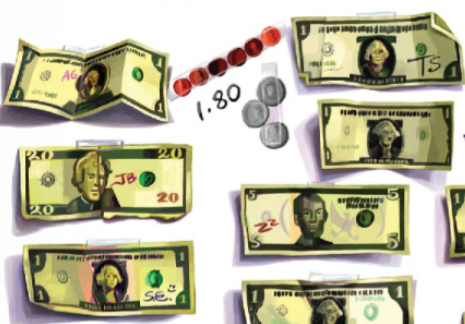It was only a dollar. Dylan Belscher noticed it on the floor as he sat at the back of his English class at John F. Kennedy High School in Cheek-towaga, New York, in March 2018.

Taping it up "was just good karma," says Belscher. Hunter Rose, then a senior, was in English class after break when he spotted the dollar on the whiteboard.












